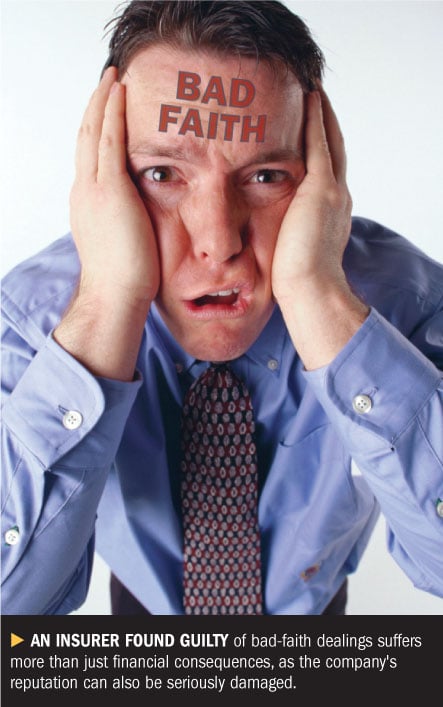The term “bad faith” is one of the most disparaging terms risk managers can level against their insurers. Bad-faith allegations are made after a claim has been poorly handled in the eyes of the risk manager, with a lawsuit often following.
 Successfully proving a bad-faith allegation requires proof of more than mere negligence. The insurer must have knowingly acted in an unreasonable manner.
Successfully proving a bad-faith allegation requires proof of more than mere negligence. The insurer must have knowingly acted in an unreasonable manner.
The damages facing an insurer found guilty of bad-faith dealings are more than financial. The insurer's reputation also can be seriously damaged.
Recommended For You
Want to continue reading?
Become a Free PropertyCasualty360 Digital Reader
Your access to unlimited PropertyCasualty360 content isn’t changing.
Once you are an ALM digital member, you’ll receive:
- Breaking insurance news and analysis, on-site and via our newsletters and custom alerts
- Weekly Insurance Speak podcast featuring exclusive interviews with industry leaders
- Educational webcasts, white papers, and ebooks from industry thought leaders
- Critical converage of the employee benefits and financial advisory markets on our other ALM sites, BenefitsPRO and ThinkAdvisor
Already have an account? Sign In Now
© 2025 ALM Global, LLC, All Rights Reserved. Request academic re-use from www.copyright.com. All other uses, submit a request to [email protected]. For more information visit Asset & Logo Licensing.








